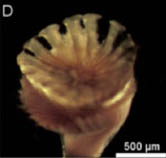Hydroides diramphus Mörch, 1863
Warning: DOMDocument::load(): SSL operation failed with code 1. OpenSSL Error messages: error:140770FC:SSL routines:SSL23_GET_SERVER_HELLO:unknown protocol in C:\Apache24\htdocs\includes\SpeciesSummary.lib.php on line 1236
Warning: DOMDocument::load(): Failed to enable crypto in C:\Apache24\htdocs\includes\SpeciesSummary.lib.php on line 1236
Warning: DOMDocument::load(https://sealifebase.nrm.se/webservice/AquaMaps/getAMap.php?genus=Hydroides&species=diramphus): failed to open stream: operation failed in C:\Apache24\htdocs\includes\SpeciesSummary.lib.php on line 1236
Warning: DOMDocument::load(): I/O warning : failed to load external entity "https://sealifebase.nrm.se/webservice/AquaMaps/getAMap.php?genus=Hydroides&species=diramphus" in C:\Apache24\htdocs\includes\SpeciesSummary.lib.php on line 1236
Classification / Names Common names | Synonyms | CoL | ITIS | WoRMS
| Sabellida | Serpulidae
Environment: milieu / climate zone / depth range / distribution range Ecologia
; intervalo de profundidade 0 - 10 m (Ref. 107830). Tropical
Distribuição Países | Áreas FAO | Ecossistemas | Ocorrências | Introduções
Circumglobal. Tropical and temperate climates.
Length at first maturity / Tamanho / Peso / Idade
Maturity: Lm ? range ? - ? cm
Depth based on occurrence; to be replaced with a better reference. Part of fouling communities attached to raft frames in mariculture zones (Ref. 127121). Can exist in both polluted and non-polluted areas. Co-occur with Hydroides santaecrucis and Hydroides elegans (Ref. 107830).
Life cycle and mating behavior Maturidade | Reprodução | Desova | Ovos | Fecundidade | Larvas
Members of the class Polychaeta are mostly gonochoric (sexual). Mating: Females produce a pheromone attracting and signalling the males to shed sperm which in turn stimulates females to shed eggs, this behavior is known as swarming. Gametes are spawned through the metanephridia or body wall rupturing (termed as "epitoky", wherein a pelagic, reproductive individual, "epitoke", is formed from a benthic, nonreproductive individual, "atoke"). After fertilization, most eggs become planktonic; although some are retained in the worm tubes or burrowed in jelly masses attached to the tubes (egg brooders). Life Cycle: Eggs develop into trocophore larva, which later metamorph into juvenile stage (body lengthened), and later develop into adults.
Referência principal
Referências | Coordenador | Colaboradores
Salazar-Vallejo, S.I. and M.H. Londoño-Mesa. 2004. (Ref. 8159)
Categoria na Lista Vermelha da IUCN (Ref. 130435)
Categoria CITES (Ref. 108899)
Not Evaluated
CMS (Ref. 116361)
Not Evaluated
Ameaça para o homem
Utilização humana
| FishSource |
Ferramentas
Mais informação
Idade/Tamanho
Crescimento
Comprimento-peso
Comprimento-comprimento
Morfologia
Larvas
Abundância
Crescimento
Comprimento-peso
Comprimento-comprimento
Morfologia
Larvas
Abundância
Fontes da internet
BHL | BOLD Systems | CISTI | DiscoverLife | FAO(Publication : search) | Fishipedia | GenBank (genoma, nucleotídeo) | GloBI | Gomexsi | Google Books | Google Scholar | Google | PubMed | Árvore da vida | Wikipedia (ir para, procurar) | Registo zoológico
Estimates based on models
Categoria de preço
(Ref. 80766):
Unknown.



